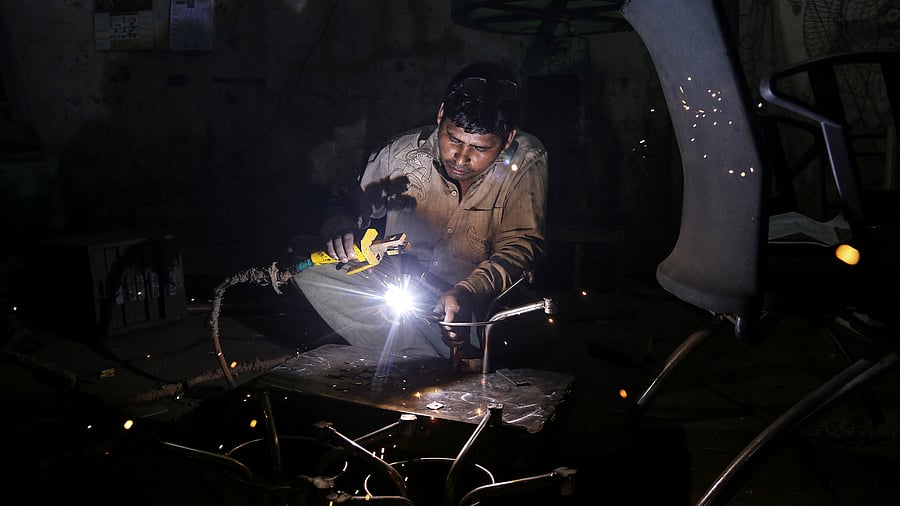
A worker welds an iron table stand at a workshop in Mumbai.
Credit: Reuters File Photo
New Delhi: India’s manufacturing output growth jumped to a 14-month high in June driven by a robust jump in international sales, notably in the US, even though consumer and capital goods segments witnessed slowdowns, as per an industry survey report released by S&P Global on Tuesday.
Purchasing Managers’ Index (PMI) for manufacturing rose to 58.4 in June from 57.6 recorded in the previous month.
Growth of new export orders gained considerable momentum in June. The rate of expansion was the third highest since data collection started in March 2005. “Firms noted strengthening demand from across the globe, with the US mentioned more frequently,” S&P Global said in a monthly survey report.
During the month under review production volumes increased at the fastest pace since April 2024, led by efficiency gains, favourable underlying demand and greater sales volumes. “This acceleration was solely led by intermediate goods makers, however, with slowdowns in the consumer and capital goods segments,” the rating agency noted in its report.
Sector data indicated faster increases in international orders in the consumer, intermediate and investment goods categories. With regards to total sales, a quicker expansion was only seen at intermediate goods makers.
The PMI data is based on a survey conducted among around 400 manufacturing companies spread across the country. A PMI reading above 50.0 signals an expansion in the sector, whereas a value below 50.0 indicates contraction.
“To keep up with strong demand — particularly from international markets, as evidenced by the substantial rise in new export orders — Indian manufacturing firms had to tap deeper into their inventories, causing the stock of finished goods to continue shrinking,” said Pranjul Bhandari, Chief India Economist at HSBC.
Input price inflation declined to a four-month low in June, despite rising iron and steel costs. The rate of increase was negligible relative to the series average.
Average selling prices rose markedly, however, as several firms sought to share additional cost burdens (freight, labour and materials) with their clients. In some instances, companies attributed upward revisions to demand buoyancy.
“Input prices moderated while average selling prices rose as some manufacturers passed on additional cost burdens to clients,” said Bhandari.
The outlook for the Indian manufacturing sector remained positive in June. However, uncertainties surrounding competition, inflation and changes in consumer preferences weighed on sentiment.
Good growth in business volumes and sales boosted hiring by manufacturers. Employment rose at the fastest pace since the beginning of the survey in 2005. Surveyed companies opted mostly for short-term recruitment.